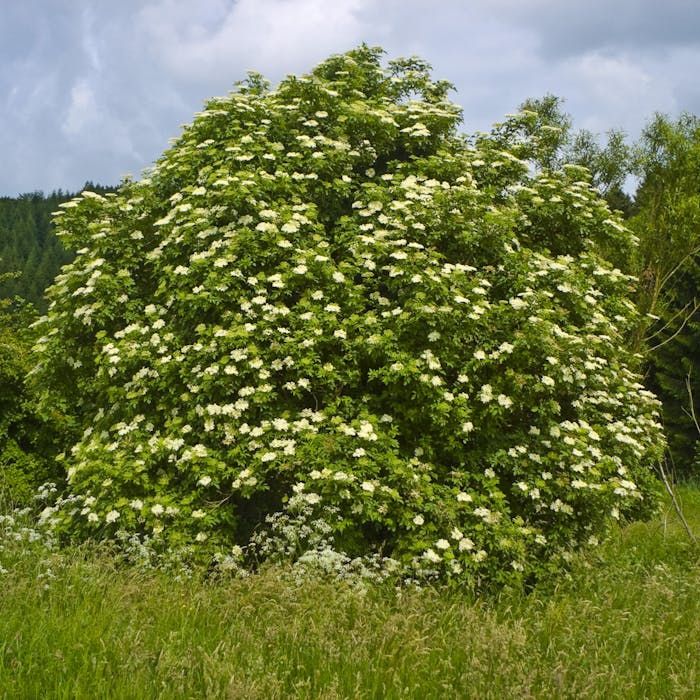
The Elder tree - protected by a female spirit
The Elder (Sambucus nigra) is a small tree or shrub found in hedgerows and woods throughout Britain. It is a very common sight and well known for its flowers and berries. It also holds an ancient place in British mythology.
Also known as the Elderberry, the Elder is native to Europe, North Africa and south-west Asia. It is happy in most soil types but especially likes damp places. The Elder often found near rabbit warrens or badger setts, where the animals distribute the seed via their droppings. The tree is fairly short-lived at about 60 years.
Anyone generally out and about amongst greenery in early summer can identify the elder as the last of the white-flowered hedging shrubs. Its creamy flower umbrels start appearing from late May - after the similar Blackthorn (sloe) in March, and Hawthorn in May.
Later in the year the tree is graced with its highly distinctive bouquets of small shiny purple-black berries.
The fruit is used to make wine and has many medicinal uses, but the seeds and other plant parts are toxic. The berries are also toxic unless cooked. They are rich in vitamin C and are often used to make preserves and wine, and can be baked in a pie with blackberries.
The flowers provide nectar for a variety of insects and the berries are eaten by birds and mammals. Small mammals, such as dormice and bank voles, eat both the berries and the flowers. Many moth caterpillars feed on elder foliage.
Elder is also a great source for a variety of coloured dyes and historically it was used to make lushly patterned Harris Tweed. Blue and purple dye was obtained from the berries, yellow and green from the leaves, and grey and black dye was made from the bark.
The Elder leaves are pinnate (resembling a feather), with 5–7 oval and toothed leaflets. Theses attributes of small size, flowers, berries, and attractive leaf shape have led to the development of various ornamental elders for the garden.
Despite its small size the Elder was sacred across Northern Europe. It has a long and confused association with witches and witchcraft. A female spirit called the Elder Mother was said to live within it, sometimes taking the appearance of a young maiden, and at other times an old woman.
To burn elder wood was thought to bring bad luck or invite the Devil to appear. On the other hand it could be used ward off witches and make magic wands. It was thought best to ask permission from the Elder Mother before removing any part of the tree, or bad luck would follow.
Further reading
Links to external websites are not maintained by Bite Sized Britain. They are provided to give users access to additional information. Bite Sized Britain is not responsible for the content of these external websites.
